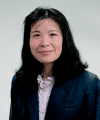 / Karol Myszkowski / Associate Professor
/ Karol Myszkowski / Associate Professor
 / A. G. Belyaev / Associate Professor
/ A. G. Belyaev / Associate Professor
 / Runhe Huang / Assistant Professor
/ Runhe Huang / Assistant Professor



 / Karol Myszkowski / Associate Professor
/ Karol Myszkowski / Associate Professor
 / A. G. Belyaev / Associate Professor
/ A. G. Belyaev / Associate Professor
 / Runhe Huang / Assistant Professor
/ Runhe Huang / Assistant Professor
The research conducted in the Computer Science and Engineering is currently concentrated on the following projects.
The main goal of the project is enhancement of realism in virtual environments via careful simulation of lighting, and seamless real-time rendering. The research is focused on the following topics:
Human perception-based metrics of the image quality, and perception-driven lighting simulation algorithms. Many improvements in the computational efficiency of rendering can be attained by focusing computations only on those scene features readily perceived by human observers under given viewing conditions.
Lighting simulation using stochastic photon tracing and density estimation techniques. All visually important lighting phenomena can be easily simulated within this framework, however, efficient techniques of lighting storage and reconstruction are of key importance to make this technique suitable for practical applications.
Image-based rendering and virtual walkthroughs in the real-world environments. Photographs are very effective and inexpensive way to acquire information about the existing real-world objects. In this research, techniques for deriving images for arbitrary camera positions based on a finite number of photographs are investigated.
In recent years it has been significant progress in applications of sophisticated mathematical theories to problems arising in image processing and shape analysis. Our research was focused on methods based on nonlinear partial differential equations and differential geometry.
Curvature-driven shape deformations have recently been a subject of much research in connection with promising applications in computer vision and multiscale shape analysis. We studied qualitative and asymptotic properties of curvature-driven curve evolutions. We also proposed and tested numerical schemes for curvature-driven curve deformations.
Surface creases (ridges and ravines) provide us with important information about the shapes of objects and can be intuitively defined as curves on a surface along which the surface bends sharply. We studied relationships between shape skeletons, caustic singularities, and the ridges and ravines. Numerical algorithms for stable extraction of the ridges and ravines were developed and tested. Applications of the ridges and ravines to segmentation of range images were considered.
Recent years, advances and great progresses in multimedia computing, network and the Internet techniques have brought about an educational revolution, i.e., global teaching and learning, which means that teachers and students can conduct their teaching/learning activities in anytime at anywhere so long as they have computers connected to the Internet. To enable global teaching and learning, a networked computer based education system is proposed and under developing.
The educational system consists of five main components: virtual office, virtual classroom, virtual collaborative room, virtual laboratory, and virtual library. The virtual classroom is a system to support preparation and authoring of teaching materials, to effectively organize teaching activities, and to ease students learning activities. Supplement environment, evaluation environment, exploring environment, and collaborative environment are developed and integrated as a hyper-environment to support the virtual classroom. The virtual collaborative room is a system to provide good interactions and communications among collaboration members. Different types of rooms are defined and constructed to support different types of collaborative activities. The virtual office, virtual laboratory, and virtual library are under developing.
Refereed Journal Papers
On a smooth generic surface we define ridges to be the local positive maxima of the maximal principal curvature along its associated curvature line and ravines to be the local negative minima of the minimal principal curvature along its associated curvature line. We investigate relationships between the ridges and ravines, singularities of the caustic generated by the surface normals, and singularities of the distance function from the surface. Stable numerical extraction of the ridges and ravines from range data is achieved via adaptive smoothing that preserves sharp ridges and ravines. We demonstrate applicability of the ridges and ravines for range image segmentation purposes.
We consider deformations of a silhouette while its boundary evolves according to a function of the curvature. The function is assumed to satisfy some general conditions of monotonicity and positiveness. For all such deformations we prove the following qualitative properties: convexity preservation, reduction of the number of the curvature extrema, and finite time disappearing. For some curvature-driven deformations we investigate the limiting shapes of the shrinking parts of the silhouette. A discrete polygon evolution scheme is used to demonstrate our theoretical results.


